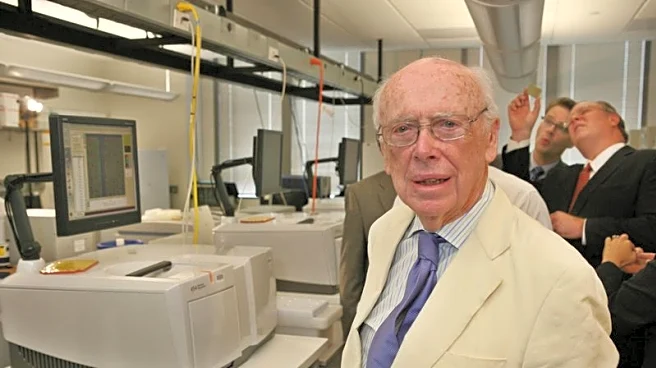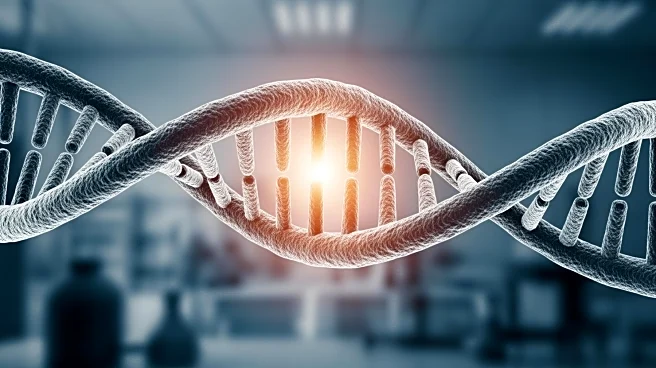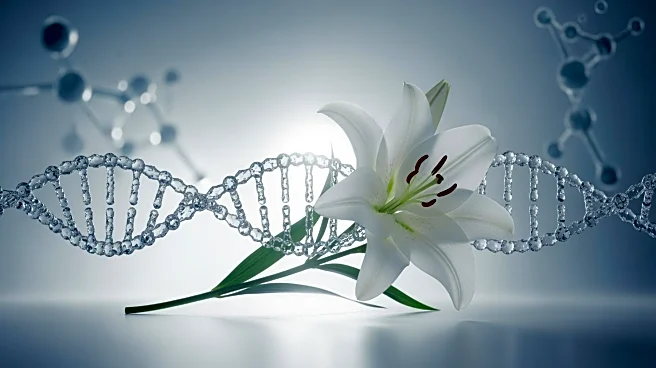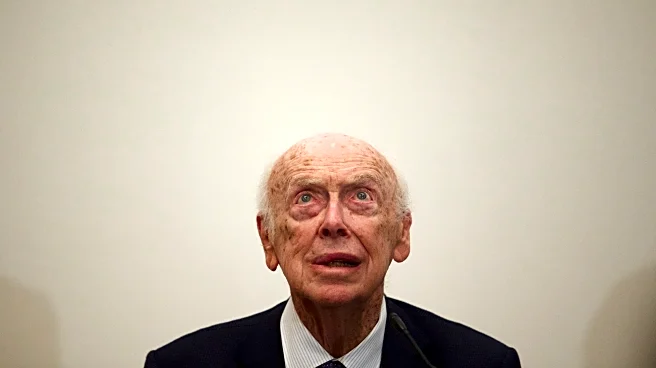What's Happening?
The discovery of the DNA double helix structure was a pivotal moment in scientific history, marked by intense competition between two research teams. American biologist James Watson and English physicist
Francis Crick, working at the University of Cambridge, raced against Maurice Wilkins and Rosalind Franklin at King's College London. Franklin's critical x-ray image, 'Photo 51', provided key insights into the helical structure of DNA. Despite the rivalry, the teams maintained a friendly relationship, exchanging letters that revealed their mutual respect. Watson and Crick's model-building approach led to the conceptual breakthrough of the double helix, which they published in 'Nature' in 1953. Maurice Wilkins congratulated them, acknowledging the importance of the discovery over individual credit. Watson, Crick, and Wilkins later received the Nobel Prize for Medicine in 1962, while Franklin, who had passed away, was not included.
Why It's Important?
The discovery of the DNA structure revolutionized biology and medicine, providing a foundation for understanding genetic information transfer. It paved the way for advancements in genetic research, biotechnology, and medical diagnostics. The recognition of Watson, Crick, and Wilkins highlights the collaborative nature of scientific progress, though it also underscores the historical oversight of Rosalind Franklin's contributions. This event exemplifies the competitive yet cooperative dynamics in scientific research, influencing how discoveries are credited and celebrated. The implications of this discovery continue to impact fields such as genomics, personalized medicine, and genetic engineering, shaping the future of healthcare and scientific inquiry.













